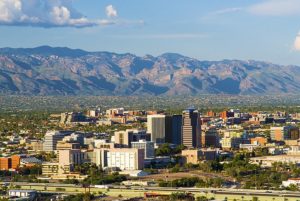Natural Gas Advocacy
The GILD Natural Gas Solution Task Force consists of GILD members who will actively participate in the group and will work to provide our membership with information regarding natural gas, its use and how it should continue to be a significant part of the USA energy plan going forward. We plan to compile a number of facts on a regular basis to be published and available to our membership so that they have a resource to fall back on for factual information to address a perception that natural gas is part of the overall climate change problem and should be reduced or eliminated as part of a larger plan to move away from fossil fuels that are contributing to large scale global warming.
News You Can Use
 Joe Biden is not coming for your gas stove A year ago, a Biden administration official set off a firestorm when he suggested the Consumer Product Safety Commission could ban gas stoves, because they have been linked to childhood asthma. Cue the outrage. On Monday, the administration released its new standards. Your gas stove is safe. The US Energy Department announced new energy efficiency standards for ovens and stoves, and the big takeaway is: Not much is changing. The department assured that the vast majority of gas stoves on the market – 97% – already meet the standards. https://www.cnn.com/2024/01/29/business/joe-biden-gas-stove/index.html?utm_campaign=mb&utm_medium=newsletter&utm_source=morning_brew
Joe Biden is not coming for your gas stove A year ago, a Biden administration official set off a firestorm when he suggested the Consumer Product Safety Commission could ban gas stoves, because they have been linked to childhood asthma. Cue the outrage. On Monday, the administration released its new standards. Your gas stove is safe. The US Energy Department announced new energy efficiency standards for ovens and stoves, and the big takeaway is: Not much is changing. The department assured that the vast majority of gas stoves on the market – 97% – already meet the standards. https://www.cnn.com/2024/01/29/business/joe-biden-gas-stove/index.html?utm_campaign=mb&utm_medium=newsletter&utm_source=morning_brew
 Opinion: Maui’s wildfire tragedy caused by “green” policies, not warming. The unnecessarily large wildfires in Maui were not caused by the slow warming of climate but by “green” policies that prevented proper wildfire management. How “green” policies caused the Maui tragedy: Failure to actively manage flammable grasses and instead letting them grow “naturally.” Spending money on expensive “green” energy and not on power-line maintenance. Deprioritizing water release in favor of “green” concerns. Anti-fossil-fuel politicians are blaming Maui’s tragic wildfire on climate change. But could the 2° F warming over 150 years, and any associated climate changes, make dangerous wildfires inevitable? Fossil fuels are being scapegoated to evade the real villain: “green” policies. https://energytalkingpoints.com/mauis-wildfire-tragedy-caused-by-%E2%80%9Cgreen%E2%80%9D-policies-not-warming/
Opinion: Maui’s wildfire tragedy caused by “green” policies, not warming. The unnecessarily large wildfires in Maui were not caused by the slow warming of climate but by “green” policies that prevented proper wildfire management. How “green” policies caused the Maui tragedy: Failure to actively manage flammable grasses and instead letting them grow “naturally.” Spending money on expensive “green” energy and not on power-line maintenance. Deprioritizing water release in favor of “green” concerns. Anti-fossil-fuel politicians are blaming Maui’s tragic wildfire on climate change. But could the 2° F warming over 150 years, and any associated climate changes, make dangerous wildfires inevitable? Fossil fuels are being scapegoated to evade the real villain: “green” policies. https://energytalkingpoints.com/mauis-wildfire-tragedy-caused-by-%E2%80%9Cgreen%E2%80%9D-policies-not-warming/
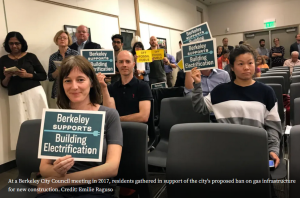
Berkeley can’t enforce natural gas ban, federal court rules again. A federal court rejected a rehearing of Berkeley’s ban on new natural gas appliances, putting similar regulations in Oakland and elsewhere in doubt. A federal appeals court said it would not reconsider an April decision striking down Berkeley’s landmark ban on the installation of natural-gas appliances in new buildings. https://www.berkeleyside.org/2024/01/03/berkeley-gas-stove-ban-ruling

- Around 2.4 billion people worldwide (around a third of the global population) cook using open fires or inefficient stoves fuelled by kerosene, biomass (wood, animal dung and crop waste) and coal, which generates harmful household air pollution.
- It is essential to expand use of clean fuels and technologies to reduce household air pollution and protect health. These include solar, electricity, biogas, liquefied petroleum gas (LPG), natural gas, alcohol fuels, as well as biomass stoves that meet the emission targets in the WHO Guidelines. https://www.who.int/news-room/fact-sheets/detail/household-air-pollution-and-health

On July 21, 2023, the Department of Energy (DOE) released its new proposed efficiency standards for water heaters. This is just another regulation aimed at the natural gas industry with natural gas stoves the target not too long ago, or a proposed EPA rule to eliminate natural gas furnaces from the ENERGY STAR Program. The proposed changes released last week would require higher efficiency for water heaters by using heat pump technology, or essentially require natural gas water heaters to use condensing technology. The natural gas industry has always supported greater energy efficiency and promoted the responsible use of natural gas for lower emissions. The proposed standards will result in a significant increase in the cost of water heaters for consumers along with increased installation cost, and limit consumer choice for natural gas-fired water heaters. DOE Proposed Rule – Water Heaters – July 2023 From Mike Davidson

Oregon county sues big oil over 2021 heatwave that killed dozens of people. Multnomah county is suing 17 companies for the fatal heatwave, seeking billions to upgrade public services and infrastructure. When 2021’s heatwave struck, Multnomah’s county seat, Portland, broke its own heat records on three consecutive days. The city’s streetcar cables melted. Officials recorded 97 hospital visits for heat illness – nearly the same number of cases they would usually see all summer. The suit seeks $50m in damages for the 2021 heat dome’s consequences and $1.5bn for future climate damages. And it demands the defendants spend an additional $50bn on a county plan to upgrade public healthcare services and infrastructure to protect residents from coming extreme heat events and other climate disasters. “We know that our need to mitigate, to take action, to respond in the future is going to escalate over time as climate change worsens,” said Pederson. “We really want to make sure that we have the resources to do that.” https://www.theguardian.com/us-news/2023/jun/22/oregon-big-oil-lawsuit-heatwave-heat-dome-pacific-northwest
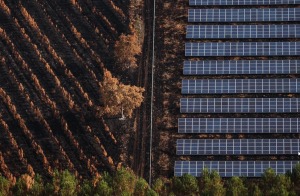
Wildfire smoke leads to drastic reduction in solar power production. Canadian wildfires had a trickle-down effect on solar energy production in the US Northeast, and the climate crisis will only make it worse. Currently, solar power only accounts for 3.4% of the US energy mix, according to the Energy Information Administration, but as the country transitions to renewable energy and solar power becomes a more important part of that mix, the threat from the climate crisis increases as well. The US solar power industry added over 20 gigawatts of solar capacity to the grid in 2022, making for a cumulative 142 gigawatts of solar electric capacity, enough to power more than 25 million “average American homes,” according to the SEIA. The Biden administration said it wants to generate a “carbon pollution-free power sector by 2035 and net-zero emissions economy by no later than 2050,” but more intense heat waves and frequent wildfires threaten to derail that agenda. https://www.emergingtechbrew.com/stories/2023/06/21/wildfire-smoke-solar-power-production?mbcid=31906650.163108&mblid=3ed7c56aab20&mid=a896439b69bf2d9da39f2bb420d77682&utm_campaign=etb&utm_medium=newsletter&utm_source=morning_brew
 Natural gas industry says no need for state methane emission regulation. Report on feasibility of state methane reduction goals due to General Assembly July 1. Calls to limit methane emissions frequently focus on the natural gas industry and/or cows and chickens. Below is an article on the state of Virginia. Scroll down and read the Pie Chart. This link is a study by the State of New York. Predictably its starts with the Oil and Gas industry. As you read down, you’ll learn Natural Gas is 11% while landfills are 58% of the emissions. Yet the State of New York is trying to ban the future use of Natural Gas in new construction. https://www.virginiamercury.com/2023/05/18/natural-gas-industry-says-no-need-for-state-methane-emission-regulation/
Natural gas industry says no need for state methane emission regulation. Report on feasibility of state methane reduction goals due to General Assembly July 1. Calls to limit methane emissions frequently focus on the natural gas industry and/or cows and chickens. Below is an article on the state of Virginia. Scroll down and read the Pie Chart. This link is a study by the State of New York. Predictably its starts with the Oil and Gas industry. As you read down, you’ll learn Natural Gas is 11% while landfills are 58% of the emissions. Yet the State of New York is trying to ban the future use of Natural Gas in new construction. https://www.virginiamercury.com/2023/05/18/natural-gas-industry-says-no-need-for-state-methane-emission-regulation/

Appeals court overturns California city’s attempt to ban new natural gas hookups. In a potential blow to efforts to slowly wean cities from natural gas, a federal appeals court on Monday overturned Berkeley, California’s ban on natural gas hookups to new buildings. Berkeley’s was the first such ban, but since then at least 90 cities and counties, and one state, have passed either ordinances or building codes that ban natural gas lines to new buildings and homes as part of an effort to phase out natural gas as they decarbonize their energy systems. These rules are being fought by natural gas companies, utilities and some restaurant groups. Monday’s ruling from the Ninth Circuit Court of Appeals came after the California Restaurant Association challenged Berkeley’s ordinance, which went into effect in 2020. https://www.usatoday.com/story/news/nation/2023/04/18/berkeley-california-ban-natural-gas-hookups-overturned/11687055002/
 Putting out the fire on the gas stove debate. A study published this winter raised concerns over gas stoves and childhood asthma, but we have many options for eliminating the excess risk. The link between gas stove use and respiratory problems such as asthma has long been a subject of intense debate among both the scientific community and the general public. Although a recent study has brought public attention to a correlation between gas stove usage and asthma risk, it’s important to put these findings into perspective both by understanding their limitations and by recognizing the means at our disposal for reducing any excess risk. With the availability of spot ventilation, natural ventilation, and air purifiers, households can significantly decrease their exposure to harmful emissions and reduce the risk of health issues associated with gas stove use. Considering that these mitigation strategies can together effectively eliminate the excess risk, the issue at hand is inconsequential. https://peterattiamd.com/putting-out-the-fire-on-the-gas-stove-debate/?utm_source=weekly-newsletter&utm_medium=email&utm_campaign=230402-NL-GasStoveDebate&utm_content=230402-NL-GasStoveDebate-email-nonsubs&mc_cid=6513c9b44e&mc_eid=a8524c9235
Putting out the fire on the gas stove debate. A study published this winter raised concerns over gas stoves and childhood asthma, but we have many options for eliminating the excess risk. The link between gas stove use and respiratory problems such as asthma has long been a subject of intense debate among both the scientific community and the general public. Although a recent study has brought public attention to a correlation between gas stove usage and asthma risk, it’s important to put these findings into perspective both by understanding their limitations and by recognizing the means at our disposal for reducing any excess risk. With the availability of spot ventilation, natural ventilation, and air purifiers, households can significantly decrease their exposure to harmful emissions and reduce the risk of health issues associated with gas stove use. Considering that these mitigation strategies can together effectively eliminate the excess risk, the issue at hand is inconsequential. https://peterattiamd.com/putting-out-the-fire-on-the-gas-stove-debate/?utm_source=weekly-newsletter&utm_medium=email&utm_campaign=230402-NL-GasStoveDebate&utm_content=230402-NL-GasStoveDebate-email-nonsubs&mc_cid=6513c9b44e&mc_eid=a8524c9235
 RMI admits their report does not demonstrate relationship between gas stoves and asthma. Washington, D.C. – RMI today finally admitted that the paper does not demonstrate a causal relationship between gas stove use and asthma. In a statement, they confirm that the report ‘does not assume or estimate a causal relationship’ between childhood asthma and natural gas stoves. Organizations that are making these allegations are relying on reports that did not test natural gas stoves and have ignored research that found no association between gas stoves and asthma. For an issue as important and personal as children’s health, sound science matters. A 2022 study by GTI Energy, which actually tested gas and electric stoves in a lab showed no difference in their particulate emissions, but it did show what and how you cook matters.” https://www.aga.org/news/news-releases/release-rmi-admits-their-report-does-not-demonstrate-relationship-between-gas-stoves-and-asthma/
RMI admits their report does not demonstrate relationship between gas stoves and asthma. Washington, D.C. – RMI today finally admitted that the paper does not demonstrate a causal relationship between gas stove use and asthma. In a statement, they confirm that the report ‘does not assume or estimate a causal relationship’ between childhood asthma and natural gas stoves. Organizations that are making these allegations are relying on reports that did not test natural gas stoves and have ignored research that found no association between gas stoves and asthma. For an issue as important and personal as children’s health, sound science matters. A 2022 study by GTI Energy, which actually tested gas and electric stoves in a lab showed no difference in their particulate emissions, but it did show what and how you cook matters.” https://www.aga.org/news/news-releases/release-rmi-admits-their-report-does-not-demonstrate-relationship-between-gas-stoves-and-asthma/
 Attacks on Gas Stoves – As you probably have seen, the baseless attacks on natural gas stoves have increased with articles in a number of publications referencing a December report in the International Journal of Environmental Research and Public Health that linked childhood asthma to gas stoves and comments made last year by Commissioner Trumka of the Consumer Products Safety Commission (CPSC) regarding the need to regulate or possibly ban natural gas stoves. I fully expect that these attacks will increase this year and beyond. APGA will be responding to a potential CPSC Request for Information (RFI) on gas stoves and indoor air quality which may come out early this year. The CPSC has recently walked back some of the statements made by Commissioner Trumka regarding CPSC efforts to regulate or ban gas stoves, so the timing of any potential regulatory action is unclear. https://www.apga.org/blogs/audrey-anderson/2023/01/12/apga-advocates-for-continued-safe-use-of-gas-appli?fbclid=IwAR218AaTfW-LqM6FefRW3AgQXquAyQ-wraFJ7xr_li6VaXpqFKq1PQJC-dQ
Attacks on Gas Stoves – As you probably have seen, the baseless attacks on natural gas stoves have increased with articles in a number of publications referencing a December report in the International Journal of Environmental Research and Public Health that linked childhood asthma to gas stoves and comments made last year by Commissioner Trumka of the Consumer Products Safety Commission (CPSC) regarding the need to regulate or possibly ban natural gas stoves. I fully expect that these attacks will increase this year and beyond. APGA will be responding to a potential CPSC Request for Information (RFI) on gas stoves and indoor air quality which may come out early this year. The CPSC has recently walked back some of the statements made by Commissioner Trumka regarding CPSC efforts to regulate or ban gas stoves, so the timing of any potential regulatory action is unclear. https://www.apga.org/blogs/audrey-anderson/2023/01/12/apga-advocates-for-continued-safe-use-of-gas-appli?fbclid=IwAR218AaTfW-LqM6FefRW3AgQXquAyQ-wraFJ7xr_li6VaXpqFKq1PQJC-dQ
 To boost clean energy, incentivize innovation in existing natural gas infrastructure. Energy security, affordability and efficiency remain top-of-mind for American consumers. As such, the role of natural gas in our country’s future energy mix has sparked continuous debate among voters and policymakers. At the local and state levels, those conversations often center around the future of natural gas utilities and potential bans on natural gas hookups in new and refurbished homes and office buildings. At the federal level, policies incentivizing homeowners to engage in fuel- or appliance-switching to electric sources like heat pumps are receiving greater attention. https://www.utilitydive.com/news/policymakers-incentivize-natural-gas-innovation-hydrogen-geothermal-renewable-natural-gas/631355/
To boost clean energy, incentivize innovation in existing natural gas infrastructure. Energy security, affordability and efficiency remain top-of-mind for American consumers. As such, the role of natural gas in our country’s future energy mix has sparked continuous debate among voters and policymakers. At the local and state levels, those conversations often center around the future of natural gas utilities and potential bans on natural gas hookups in new and refurbished homes and office buildings. At the federal level, policies incentivizing homeowners to engage in fuel- or appliance-switching to electric sources like heat pumps are receiving greater attention. https://www.utilitydive.com/news/policymakers-incentivize-natural-gas-innovation-hydrogen-geothermal-renewable-natural-gas/631355/
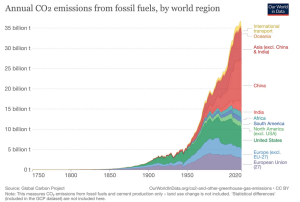 A pro-human, pro-freedom policy for CO2 emissions. The pro-human CO2 policy is to reduce CO2 emissions long-term through liberating innovation, not punishing America. America is taking a “punish America” approach to reducing CO2, making our energy more expensive and less reliable while China, Russia, and others increase their emissions. Fossil fuels actually overall make us far safer from climate by providing low-cost energy for the amazing machines that protect us against storms, protect us against extreme temperatures, and alleviate drought. Climate disaster deaths have decreased 98% over the last century. https://alexepstein.substack.com/p/a-pro-human-pro-freedom-policy-for?utm_source=substack&utm_medium=email&utm_content=share
A pro-human, pro-freedom policy for CO2 emissions. The pro-human CO2 policy is to reduce CO2 emissions long-term through liberating innovation, not punishing America. America is taking a “punish America” approach to reducing CO2, making our energy more expensive and less reliable while China, Russia, and others increase their emissions. Fossil fuels actually overall make us far safer from climate by providing low-cost energy for the amazing machines that protect us against storms, protect us against extreme temperatures, and alleviate drought. Climate disaster deaths have decreased 98% over the last century. https://alexepstein.substack.com/p/a-pro-human-pro-freedom-policy-for?utm_source=substack&utm_medium=email&utm_content=share

A ‘Tsunami of Shutoffs’: 20 Million US Homes Are Behind on Energy Bills Electricity prices are soaring, and many Americans are struggling to make their payments. One in six homes in the US, or roughly 20 million households, have fallen behind on utility bills, according to the National Energy Assistance Directors Association. In total, US households are on the hook for $16 million in late energy payments, which is double the amount pre-Covid. https://www.bloomberg.com/news/articles/2022-08-23/can-t-pay-utility-bills-20-million-us-homes-behind-on-payments-facing-shutoffs?leadSource=uverify%20wall
 Wrong Again: 50 Years of Failed Eco-pocalyptic Predictions Modern doomsayers have been predicting climate and environmental disaster since the 1960s. They continue to do so today. None of the apocalyptic predictions with due dates as of today have come true. What follows is a collection of notably wild predictions from notable people in government and science. More than merely spotlighting the failed predictions, this collection shows that the makers of failed apocalyptic predictions often are individuals holding respected positions in government and science. While such predictions have been and continue to be enthusiastically reported by a media eager for sensational headlines, the failures are typically not revisited. https://cei.org/blog/wrong-again-50-years-of-failed-eco-pocalyptic-predictions/
Wrong Again: 50 Years of Failed Eco-pocalyptic Predictions Modern doomsayers have been predicting climate and environmental disaster since the 1960s. They continue to do so today. None of the apocalyptic predictions with due dates as of today have come true. What follows is a collection of notably wild predictions from notable people in government and science. More than merely spotlighting the failed predictions, this collection shows that the makers of failed apocalyptic predictions often are individuals holding respected positions in government and science. While such predictions have been and continue to be enthusiastically reported by a media eager for sensational headlines, the failures are typically not revisited. https://cei.org/blog/wrong-again-50-years-of-failed-eco-pocalyptic-predictions/
 Hydrogen is having a moment. Utilities and startups alike are racing to bring the molecule mainstream. It admittedly has its appeal. Hydrogen can be burned with zero greenhouse gas emissions and it can be blended with methane gas to reduce its emissions. Mixing it in with gas used to heat homes or cooking could, in theory, help clean up the building sector that 38% of all emissions globally are tied to. But producing hydrogen requires a lot of energy, often fossil-fueled energy. While there are some promising methods to make it using renewables, they’re still not quite ready for prime time because they’re more expensive than their fossil-fueled counterparts. You can even create hydrogen using nuclear power. It’s called — I kid you not — pink hydrogen. It’s also expensive, though. Nevertheless, utilities are hot for hydrogen; as of late last year, utilities across the U.S. had announced 26 hydrogen pilot projects. https://www.protocol.com/newsletters/climate/hydrogen-methane-gas-dangers
Hydrogen is having a moment. Utilities and startups alike are racing to bring the molecule mainstream. It admittedly has its appeal. Hydrogen can be burned with zero greenhouse gas emissions and it can be blended with methane gas to reduce its emissions. Mixing it in with gas used to heat homes or cooking could, in theory, help clean up the building sector that 38% of all emissions globally are tied to. But producing hydrogen requires a lot of energy, often fossil-fueled energy. While there are some promising methods to make it using renewables, they’re still not quite ready for prime time because they’re more expensive than their fossil-fueled counterparts. You can even create hydrogen using nuclear power. It’s called — I kid you not — pink hydrogen. It’s also expensive, though. Nevertheless, utilities are hot for hydrogen; as of late last year, utilities across the U.S. had announced 26 hydrogen pilot projects. https://www.protocol.com/newsletters/climate/hydrogen-methane-gas-dangers
 Maryland’s Largest County Just Banned Gas Appliances in Most New Buildings—But Not Without Some Concessions Environmental advocates and officials are feeling bittersweet about the landmark legislation, which was amended to push back the transition by three years. Passed unanimously by the county council on Tuesday, the amended “Comprehensive Building Decarbonization” legislation—or Bill 13-22—requires the county executive to issue all-electric building standards for many newly constructed buildings within the jurisdiction by Dec. 31, 2026. Montgomery County is one of the first counties in the Mid-Atlantic to ban gas in most new buildings; nearby Washington, D.C. also banned gas in most new construction starting in 2026. Montgomery County officials said that federal funding is additional motivation to hasten transition to cleaner sources of electricity and electrifying building and transportation sectors, which were among the major sources of pollution. The county has also experienced a string of gas explosions in recent months, endangering lives and damaging properties, which, advocates said, is another reason to phase out natural gas. https://insideclimatenews.org/news/02122022/montgomery-county-maryland-gas-building-ban/
Maryland’s Largest County Just Banned Gas Appliances in Most New Buildings—But Not Without Some Concessions Environmental advocates and officials are feeling bittersweet about the landmark legislation, which was amended to push back the transition by three years. Passed unanimously by the county council on Tuesday, the amended “Comprehensive Building Decarbonization” legislation—or Bill 13-22—requires the county executive to issue all-electric building standards for many newly constructed buildings within the jurisdiction by Dec. 31, 2026. Montgomery County is one of the first counties in the Mid-Atlantic to ban gas in most new buildings; nearby Washington, D.C. also banned gas in most new construction starting in 2026. Montgomery County officials said that federal funding is additional motivation to hasten transition to cleaner sources of electricity and electrifying building and transportation sectors, which were among the major sources of pollution. The county has also experienced a string of gas explosions in recent months, endangering lives and damaging properties, which, advocates said, is another reason to phase out natural gas. https://insideclimatenews.org/news/02122022/montgomery-county-maryland-gas-building-ban/
 Ann Arbor, MI – At the November 15th meeting of the Ann Arbor Planning Commission city staff proposed changes to the city’s development code to prohibit natural gas connections for new buildings starting in 2023. Would apply to all newly constructed buildings, as well as substantially renovated or expanded buildings, starting in January. The only exception is for buildings that would require a gas connection to be consistent with the Fire Code. Action on the ordinance could be taken as soon as December 6th. https://a2gov.legistar.com/LegislationDetail.aspx?ID=5934510&GUID=B5F47C93-986A-4C47-9680-E4389CC43AA5&Options=&Search=
Ann Arbor, MI – At the November 15th meeting of the Ann Arbor Planning Commission city staff proposed changes to the city’s development code to prohibit natural gas connections for new buildings starting in 2023. Would apply to all newly constructed buildings, as well as substantially renovated or expanded buildings, starting in January. The only exception is for buildings that would require a gas connection to be consistent with the Fire Code. Action on the ordinance could be taken as soon as December 6th. https://a2gov.legistar.com/LegislationDetail.aspx?ID=5934510&GUID=B5F47C93-986A-4C47-9680-E4389CC43AA5&Options=&Search=
On November 21st held the first public work session on a proposed natural gas ban since staff were directed by council to draft an ordinance back in July. The proposal would prohibit the installation of all fossil fuel infrastructure in new low-rise residential construction. The four hour meeting on the 21st featured over 100 public commenters that were evenly split on those in favor of the ban and those opposed. The council has stated they will hold another public hearing on the proposal but have not yet scheduled a date. Following the meeting on the 21st at the next Council meeting on the 28th Eugene Mayor Lucy Vinis responded to the widespread community pushback by stating “the public hearing was the beginning of taking a step back and saying, ‘No, you will be part of this process.'” On the 28th the Council had been scheduled to discuss a gas ban in new commercial construction but postponed that discussion to a later date. https://ompnetwork.s3-us-west-2.amazonaws.com/sites/134/documents/cc_agenda_packet_11-21-22_ph_post.pdf?SQBtvUlicaxbPbDG0SHo_SMsNcU0nKMa
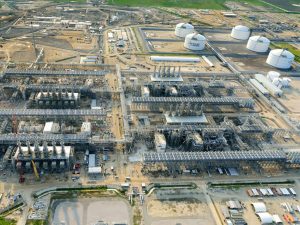
US Will Lead in LNG Export Capacity by End of 2022. New projects coming on line throughout the year will vault the nation ahead of Australia and Qatar. New LNG liquefaction trains at Sabine Pass and Calcasieu Pass in Louisiana due in service prior to year-end will result in the US having the world’s largest LNG export capacity, according to the US Energy Information Administration (EIA). US export capacity has grown rapidly since the Lower 48 states first began exporting LNG in February 2016. In 2019, the US became the world’s third-largest LNG exporter, behind Australia and Qatar. Average utilization for US LNG plants climbed from 43% in third quarter of 2020 to 98% a year later, according to IHS Markit. https://jpt.spe.org/us-will-lead-in-lng-export-capacity-by-end-of-2022
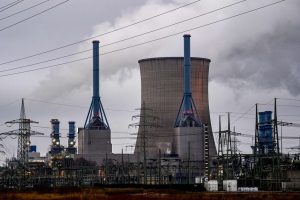 Nuclear Power, Natural Gas Secure EU Backing as ‘Green’ Investments The European Commission is to label energy from nuclear power and natural gas as ‘green’ investments, in the face of fierce opposition. The European Commission, the EU’s executive arm, published a revised version of its proposal on Wednesday, which includes tweaks to the criteria for labeling nuclear and natural gas as sustainable and changes that are meant to strengthen companies’ disclosure requirements. https://www.wsj.com/articles/nuclear-power-natural-gas-secure-eu-backing-as-green-investments-11643803487 or click here for pdf of article.
Nuclear Power, Natural Gas Secure EU Backing as ‘Green’ Investments The European Commission is to label energy from nuclear power and natural gas as ‘green’ investments, in the face of fierce opposition. The European Commission, the EU’s executive arm, published a revised version of its proposal on Wednesday, which includes tweaks to the criteria for labeling nuclear and natural gas as sustainable and changes that are meant to strengthen companies’ disclosure requirements. https://www.wsj.com/articles/nuclear-power-natural-gas-secure-eu-backing-as-green-investments-11643803487 or click here for pdf of article.
 Is $100 Per Oil Barrel Back in Business? Whatever happened to the “clean air mandate?” With a barrel of oil now bumping back to $100 or more, President Biden would like to forget his closing of an oil supply source just North of the American/Canadian border. This would show his commitment to clean air and the vanquishing of oil, coal, and natural gas. Not, the President is pressured to broaden oil supply and coal wherever possible, here and for our European allies. https://supplersgild.org/wp-content/uploads/2022/03/Beschloss-Perspective.png
Is $100 Per Oil Barrel Back in Business? Whatever happened to the “clean air mandate?” With a barrel of oil now bumping back to $100 or more, President Biden would like to forget his closing of an oil supply source just North of the American/Canadian border. This would show his commitment to clean air and the vanquishing of oil, coal, and natural gas. Not, the President is pressured to broaden oil supply and coal wherever possible, here and for our European allies. https://supplersgild.org/wp-content/uploads/2022/03/Beschloss-Perspective.png
 The campaign to ban gas stoves is heating up. Over the past three years, dozens of cities across the country have banned natural gas hookups in newly constructed buildings as part of a growing campaign to reduce carbon emissions from homes. Natural gas consumption accounts for 80 percent of fossil fuel emissions from residential and commercial buildings, according to the Environmental Protection Agency. One study estimated that New York’s ban on its own would create an emissions reduction comparable to taking 450,000 cars off the road. But the movement has met significant pushback. About 35 percent of U.S. homes use gas for cooking, and surveys show that many people are resistant to switching to an electric or induction range. The gas industry has also launched a massive lobbying campaign that has helped convince 19 Republican-led states to preemptively bar local governments from imposing bans on natural gas. https://news-yahoo-com.cdn.ampproject.org/c/s/news.yahoo.com/amphtml/the-campaign-to-ban-gas-stoves-is-heating-up-215656354.html
The campaign to ban gas stoves is heating up. Over the past three years, dozens of cities across the country have banned natural gas hookups in newly constructed buildings as part of a growing campaign to reduce carbon emissions from homes. Natural gas consumption accounts for 80 percent of fossil fuel emissions from residential and commercial buildings, according to the Environmental Protection Agency. One study estimated that New York’s ban on its own would create an emissions reduction comparable to taking 450,000 cars off the road. But the movement has met significant pushback. About 35 percent of U.S. homes use gas for cooking, and surveys show that many people are resistant to switching to an electric or induction range. The gas industry has also launched a massive lobbying campaign that has helped convince 19 Republican-led states to preemptively bar local governments from imposing bans on natural gas. https://news-yahoo-com.cdn.ampproject.org/c/s/news.yahoo.com/amphtml/the-campaign-to-ban-gas-stoves-is-heating-up-215656354.html
 Hungary’s PM Orban blames EU climate change actions for energy price surge. Hungarian Prime Minister Viktor Orban on Friday blamed European Union action to combat climate change for a surge in energy prices, and said that Poland and Hungary would present a united front on this issue at the next EU summit. The jump in energy prices has inflamed tensions between European Union countries over their green transition policies. https://www.reuters.com/world/europe/hungarys-pm-orban-blames-eu-climate-change-actions-energy-price-surge-2021-10-08/
Hungary’s PM Orban blames EU climate change actions for energy price surge. Hungarian Prime Minister Viktor Orban on Friday blamed European Union action to combat climate change for a surge in energy prices, and said that Poland and Hungary would present a united front on this issue at the next EU summit. The jump in energy prices has inflamed tensions between European Union countries over their green transition policies. https://www.reuters.com/world/europe/hungarys-pm-orban-blames-eu-climate-change-actions-energy-price-surge-2021-10-08/
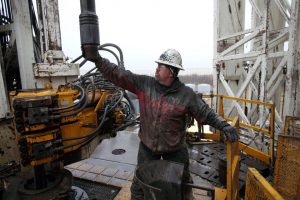 The Obvious Delusion Of ‘No More Natural Gas’ Whether coming from politicians, ESG insiders, or competing industries, the assertion that natural gas demand is somehow going away, and investments in new supply are thus unwarranted, is demonstrably false. https://www.forbes.com/sites/judeclemente/2021/09/12/the-obvious-delusion-of-no-more-natural-gas/?sh=59417e4c138e
The Obvious Delusion Of ‘No More Natural Gas’ Whether coming from politicians, ESG insiders, or competing industries, the assertion that natural gas demand is somehow going away, and investments in new supply are thus unwarranted, is demonstrably false. https://www.forbes.com/sites/judeclemente/2021/09/12/the-obvious-delusion-of-no-more-natural-gas/?sh=59417e4c138e
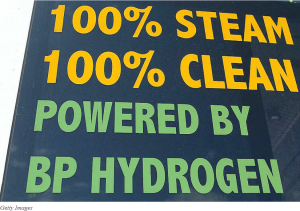
Hydrogen: hype or net-zero hero? In the climate wars, hyperbole is weaponized and groupthink rewarded. We are standing witness as hydrogen becomes the latest trend in carbon piety to capture the attention of elites. For decades hydrogen (H) has been used as a coolant in large generators, a propellant in rockets, and as a building block for fertilizer. Hydrogen’s latest incarnation invokes the Hollywood-like properties of saving the world. The phrases ‘net-zero’ and ‘green hydrogen’ have been thrust into the lexicon faster than ‘flatten the curve’ became ‘vaccine passport’. https://www.spectator.com.au/2021/10/hydrogen-hype-or-net-zero-hero/

Energy Champions — Sep 13, 2021 By Alex Epstein This document contains new messaging for the September 13, 2021 Energy Champions meeting. I’ll be giving two presentations: “How to use the new EnergyTalkingPoints.com” and “Resourceful Researchers.” The CES has morphed into the Clean Electricity Payment Program. Here are my updated talking points. In one of the most dangerous and most Unconstitutional acts in US history, Congress and the President are abusing the budget reconciliation process to dictate, via a “Clean Electricity Payment Program,” that Americans use >50% unreliable solar+wind electricity by 2030. https://supplersgild.org/energy-champions-notes-for-sep-13-2021/
 California asks Biden administration to allow gas plants to run at maximum (Reuters) – California’s grid operator has asked the Biden administration to allow some natural gas power plants to operate without pollution restrictions for 60 days to shore up the state’s tight electricity supplies, the U.S. Energy Department said. The state is increasingly relying on large amounts of wind and solar energy that only run when the wind is blowing or the sun is shining. This year extreme drought has slashed the state’s hydroelectric power capacity while wildfires threaten transmission lines that bring in power from other states. https://www.reuters.com/business/energy/california-asks-biden-administration-allow-gas-plants-run-maximum-2021-09-09/
California asks Biden administration to allow gas plants to run at maximum (Reuters) – California’s grid operator has asked the Biden administration to allow some natural gas power plants to operate without pollution restrictions for 60 days to shore up the state’s tight electricity supplies, the U.S. Energy Department said. The state is increasingly relying on large amounts of wind and solar energy that only run when the wind is blowing or the sun is shining. This year extreme drought has slashed the state’s hydroelectric power capacity while wildfires threaten transmission lines that bring in power from other states. https://www.reuters.com/business/energy/california-asks-biden-administration-allow-gas-plants-run-maximum-2021-09-09/
 Decorah study commissioned by Black Hills Energy concludes natural gas costs significantly less than electricity to heat a local home. The debate over the best ways to reduce greenhouse gas emissions is in full swing, with the Biden administration setting a goal of net-zero greenhouse gas emissions by 2050. Black Hills Energy has commissioned a study of greenhouse gas emissions in the Decorah area, hiring a Chicago area consulting firm which has just released its report: https://www.gti.energy/analyzing-residential-greenhouse-gas-ghg-emission-reductions/ . The study compares natural gas prices to electricity prices and concludes “residential electrification results in significant increases in annual energy bills for Decorah homeowners.” The report says homeowners who use natural gas will spend $800 a year and $30,000 over 30 years on using natural gas, while those who use electricity would spend $2,000 a year and $58,000 over 30 years. https://decorahnews.com/news/2871/decorah-study-commissioned-by-black-hills-energy-concludes-natural-gas-costs-significantly-less-than-electricity-to-heat-a-loca/
Decorah study commissioned by Black Hills Energy concludes natural gas costs significantly less than electricity to heat a local home. The debate over the best ways to reduce greenhouse gas emissions is in full swing, with the Biden administration setting a goal of net-zero greenhouse gas emissions by 2050. Black Hills Energy has commissioned a study of greenhouse gas emissions in the Decorah area, hiring a Chicago area consulting firm which has just released its report: https://www.gti.energy/analyzing-residential-greenhouse-gas-ghg-emission-reductions/ . The study compares natural gas prices to electricity prices and concludes “residential electrification results in significant increases in annual energy bills for Decorah homeowners.” The report says homeowners who use natural gas will spend $800 a year and $30,000 over 30 years on using natural gas, while those who use electricity would spend $2,000 a year and $58,000 over 30 years. https://decorahnews.com/news/2871/decorah-study-commissioned-by-black-hills-energy-concludes-natural-gas-costs-significantly-less-than-electricity-to-heat-a-loca/
 Is climate change to blame for extreme weather events? Here’s how we find out. Attribution studies help us determine which natural disasters were fueled by climate change. A lot of people are asking: Was it climate change? Answering that question isn’t so simple. https://www.fastcompany.com/90669818/is-climate-change-to-blame-for-extreme-weather-events-heres-how-we-find-out
Is climate change to blame for extreme weather events? Here’s how we find out. Attribution studies help us determine which natural disasters were fueled by climate change. A lot of people are asking: Was it climate change? Answering that question isn’t so simple. https://www.fastcompany.com/90669818/is-climate-change-to-blame-for-extreme-weather-events-heres-how-we-find-out
 For Many, Hydrogen Is the Fuel of the Future. New Research Raises Doubts. Industry has been promoting hydrogen as a reliable, next-generation fuel to power cars, heat homes and generate electricity. It may, in fact, be worse for the climate than previously thought. The main stumbling block: Most hydrogen used today is extracted from natural gas in a process that requires a lot of energy and emits vast amounts of carbon dioxide. Producing natural gas also releases methane, a particularly potent greenhouse gas. https://supplersgild.org/for-many-hydrogen-is-the-fuel-of-the-future-new-research-raises-doubts/
For Many, Hydrogen Is the Fuel of the Future. New Research Raises Doubts. Industry has been promoting hydrogen as a reliable, next-generation fuel to power cars, heat homes and generate electricity. It may, in fact, be worse for the climate than previously thought. The main stumbling block: Most hydrogen used today is extracted from natural gas in a process that requires a lot of energy and emits vast amounts of carbon dioxide. Producing natural gas also releases methane, a particularly potent greenhouse gas. https://supplersgild.org/for-many-hydrogen-is-the-fuel-of-the-future-new-research-raises-doubts/
 Yesterday, during the height of summer, Greenland GAINED Enough Mass to Bury Central Park Under 2,200+ Feet of Ice Aug. 9, 2021. For the majority of this SMB season, snow and ice have been building across the world’s largest island at a prodigious rate. Throughout this summer melt season so far, record daily GAINS have been a regular occurrence, including that literally “off the charts” gain we reported in late-May. https://electroverse.net/yesterday-during-the-height-of-summer-greenland-gained-enough-mass-to-bury-central-park-under-2200-feet-of-ice/
Yesterday, during the height of summer, Greenland GAINED Enough Mass to Bury Central Park Under 2,200+ Feet of Ice Aug. 9, 2021. For the majority of this SMB season, snow and ice have been building across the world’s largest island at a prodigious rate. Throughout this summer melt season so far, record daily GAINS have been a regular occurrence, including that literally “off the charts” gain we reported in late-May. https://electroverse.net/yesterday-during-the-height-of-summer-greenland-gained-enough-mass-to-bury-central-park-under-2200-feet-of-ice/
 Global Methane Emissions Equaled Europe’s Carbon Footprint in 2020. Methane leaks from oil and gas operations fell 10% from 2019 as production dropped. Oil and gas operation emitted 70 million metric tons of methane in 2020. Global CO2 emissions are 33 billion tons in 2020. Using the GWP over 100 years. Methane is said to be 28 times greater than CO2. Multiplying 70*28=1,960 1960/33,000 means oil and gas globally accounted for only 6% of the WORLDS greenhouse gas emissions. https://www.bloomberg.com/news/articles/2021-01-18/global-methane-emissions-equaled-europe-s-carbon-footprint-in-2020
Global Methane Emissions Equaled Europe’s Carbon Footprint in 2020. Methane leaks from oil and gas operations fell 10% from 2019 as production dropped. Oil and gas operation emitted 70 million metric tons of methane in 2020. Global CO2 emissions are 33 billion tons in 2020. Using the GWP over 100 years. Methane is said to be 28 times greater than CO2. Multiplying 70*28=1,960 1960/33,000 means oil and gas globally accounted for only 6% of the WORLDS greenhouse gas emissions. https://www.bloomberg.com/news/articles/2021-01-18/global-methane-emissions-equaled-europe-s-carbon-footprint-in-2020
 Massachusetts Deemed Natural Gas Battleground A July 31, 2021, The Wall St. Journal deemed Massachusetts “a key battleground” as more towns around Boston are debating measures to block or limit the use of natural gas in new construction, citing concerns about climate change. That sentiment was expressed by an architect who has drafted such measures who told the journalist: “People are realizing that it’s now or never, There’s really only one way to reduce our emissions, and that is to stop using gas and stop using fossil fuels.” Yet the market place is pushing back because all electric homes in colder climates require more expensive heat pumps. A study by a research subsidiary of the National Association of Home Builders published earlier this year estimated that building all-electric homes in the colder climates of Denver and Minneapolis may cost at least $11,000 more than ones that use gas. https://www.wsj.com/articles/towns-trying-to-ban-natural-gas-face-resistance-in-their-push-for-all-electric-homes-11627723801
Massachusetts Deemed Natural Gas Battleground A July 31, 2021, The Wall St. Journal deemed Massachusetts “a key battleground” as more towns around Boston are debating measures to block or limit the use of natural gas in new construction, citing concerns about climate change. That sentiment was expressed by an architect who has drafted such measures who told the journalist: “People are realizing that it’s now or never, There’s really only one way to reduce our emissions, and that is to stop using gas and stop using fossil fuels.” Yet the market place is pushing back because all electric homes in colder climates require more expensive heat pumps. A study by a research subsidiary of the National Association of Home Builders published earlier this year estimated that building all-electric homes in the colder climates of Denver and Minneapolis may cost at least $11,000 more than ones that use gas. https://www.wsj.com/articles/towns-trying-to-ban-natural-gas-face-resistance-in-their-push-for-all-electric-homes-11627723801
 National Poll Finds Strong Support for Oil and Gas Pipelines Nearly 90 percent of Americans believe the United States should reduce its reliance on foreign energy sources and nearly three-quarters support oil and natural gas transport via pipeline, according to a recent nationwide poll commissioned by the GAIN Coalition. This overwhelming show of support for American energy and infrastructure also includes the majority of Democrats polled, indicating strong bipartisan support for commonsense energy and infrastructure policy. https://www.prnewswire.com/news-releases/national-poll-finds-strong-support-for-oil-and-gas-pipelines-301309511.html
National Poll Finds Strong Support for Oil and Gas Pipelines Nearly 90 percent of Americans believe the United States should reduce its reliance on foreign energy sources and nearly three-quarters support oil and natural gas transport via pipeline, according to a recent nationwide poll commissioned by the GAIN Coalition. This overwhelming show of support for American energy and infrastructure also includes the majority of Democrats polled, indicating strong bipartisan support for commonsense energy and infrastructure policy. https://www.prnewswire.com/news-releases/national-poll-finds-strong-support-for-oil-and-gas-pipelines-301309511.html
 Pew Research Poll Shows Majority of U.S. Opposes Phasing Out Fossil Fuels The Pew Research Center released a new poll which found that nearly two-thirds of the U.S. public opposes phasing out fossil fuels as a means of addressing climate change. “Still, most Americans favor using a mix of energy sources to meet the country’s needs – including renewables as well as oil, coal and natural gas. There is limited support for phasing out the use of fossil fuels altogether.” https://www.worldoil.com/news/2021/5/28/majority-of-us-opposes-phasing-out-fossil-fuels-pew-research-center-poll-shows
Pew Research Poll Shows Majority of U.S. Opposes Phasing Out Fossil Fuels The Pew Research Center released a new poll which found that nearly two-thirds of the U.S. public opposes phasing out fossil fuels as a means of addressing climate change. “Still, most Americans favor using a mix of energy sources to meet the country’s needs – including renewables as well as oil, coal and natural gas. There is limited support for phasing out the use of fossil fuels altogether.” https://www.worldoil.com/news/2021/5/28/majority-of-us-opposes-phasing-out-fossil-fuels-pew-research-center-poll-shows
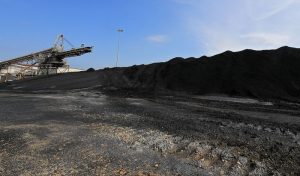 Opinion: Natural gas could be key to lowering emissions in Virginia Passing gas “bans” as California cities have done is the opposite of the thoughtful, smart policy for which Virginia has traditionally been known. Virginia consumers have paid billions for natural gas infrastructure that is in the ground, modern and has very low emissions. Utilizing that infrastructure smartly will protect that investment, do right by our environment, and greatly reduce the cost risk of climate change regulation to our commonwealth. https://www.pilotonline.com/opinion/columns/vp-ed-column-kibler-0727-20210726-lv32bfyezbdbjo4tgpyrkaw534-story.html
Opinion: Natural gas could be key to lowering emissions in Virginia Passing gas “bans” as California cities have done is the opposite of the thoughtful, smart policy for which Virginia has traditionally been known. Virginia consumers have paid billions for natural gas infrastructure that is in the ground, modern and has very low emissions. Utilizing that infrastructure smartly will protect that investment, do right by our environment, and greatly reduce the cost risk of climate change regulation to our commonwealth. https://www.pilotonline.com/opinion/columns/vp-ed-column-kibler-0727-20210726-lv32bfyezbdbjo4tgpyrkaw534-story.html
 Green New Deal Would Cost American Consumers More Than $258 Billion – in JUST Four Appliances The “Green New Deal” is not such a good deal for American energy consumers. Designed to completely replace America’s use of abundant and affordable energy sources such as natural gas, the resolution’s goal is to make the country entirely dependent upon renewable energy. The Green New Deal is not a practical solution for American consumers, as many common household appliances, such as furnaces, water heaters, stoves, and dryers, are powered by natural gas and would have to be replaced at the expense of hardworking families across the country. https://consumerenergyalliance.org/2021/04/green-new-deal-would-cost-american-consumers-more-than-258-billion-in-just-four-appliances/
Green New Deal Would Cost American Consumers More Than $258 Billion – in JUST Four Appliances The “Green New Deal” is not such a good deal for American energy consumers. Designed to completely replace America’s use of abundant and affordable energy sources such as natural gas, the resolution’s goal is to make the country entirely dependent upon renewable energy. The Green New Deal is not a practical solution for American consumers, as many common household appliances, such as furnaces, water heaters, stoves, and dryers, are powered by natural gas and would have to be replaced at the expense of hardworking families across the country. https://consumerenergyalliance.org/2021/04/green-new-deal-would-cost-american-consumers-more-than-258-billion-in-just-four-appliances/
 Despite pandemic shutdowns, carbon dioxide and methane surged in 2020 Carbon dioxide levels are now higher than at anytime in the past 3.6 million years. Levels of the two most important anthropogenic greenhouse gases, carbon dioxide and methane, continued their unrelenting rise in 2020 despite the economic slowdown caused by the coronavirus pandemic response, NOAA announced today. https://research.noaa.gov/article/ArtMID/587/ArticleID/2742/Despite-pandemic-shutdowns-carbon-dioxide-and-methane-surged-in-2020
Despite pandemic shutdowns, carbon dioxide and methane surged in 2020 Carbon dioxide levels are now higher than at anytime in the past 3.6 million years. Levels of the two most important anthropogenic greenhouse gases, carbon dioxide and methane, continued their unrelenting rise in 2020 despite the economic slowdown caused by the coronavirus pandemic response, NOAA announced today. https://research.noaa.gov/article/ArtMID/587/ArticleID/2742/Despite-pandemic-shutdowns-carbon-dioxide-and-methane-surged-in-2020
New analysis shows microbial sources fueling rise of atmospheric methane The sudden and sustained rise in atmospheric levels of the potent greenhouse gas methane since 2007 has posed one of the most significant and pressing questions in climate research: Where is it coming from? Fossil fuel emissions? Biological sources? A diminished capacity by the atmosphere to break down methane? A climate tipping point? https://research.noaa.gov/article/ArtMID/587/ArticleID/2769/New-analysis-shows-microbial-sources-fueling-rise-of-atmospheric-methane
 Natural Gas Projects Boost Midstream in Early 2021 While no one can dispute that 2020 was not a good year for midstream, there has been some positive movement concerning natural gas pipelines – despite a year characterized by pricing woes and a crippling pandemic. Toward the end of the year and into early 2021, about 4.4 Bcf/d (124 MMcm/d) of new natural gas pipeline capacity has entered service, according to data provided by the U.S. Energy Information Administration (EIA) for the period of November 2020 through January 2021. https://pgjonline.com/magazine/2021/may-2021-vol-248-no-5/features/natural-gas-projects-boost-midstream-in-early-2021
Natural Gas Projects Boost Midstream in Early 2021 While no one can dispute that 2020 was not a good year for midstream, there has been some positive movement concerning natural gas pipelines – despite a year characterized by pricing woes and a crippling pandemic. Toward the end of the year and into early 2021, about 4.4 Bcf/d (124 MMcm/d) of new natural gas pipeline capacity has entered service, according to data provided by the U.S. Energy Information Administration (EIA) for the period of November 2020 through January 2021. https://pgjonline.com/magazine/2021/may-2021-vol-248-no-5/features/natural-gas-projects-boost-midstream-in-early-2021
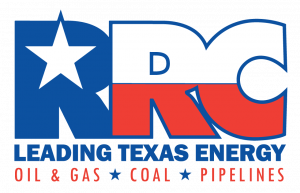 Texas Legislature passes bills to support fossil fuel industries AUSTIN – Tuesday, the Texas Legislature passed two critically important bills that allow Texas to fight national efforts to eliminate fossil fuels. House Bill 17 protects consumers by prohibiting political subdivisions from discriminating against specific fuel sources like natural gas and coal; this will ensure cities and counties cannot pass California-style ordinances that ban gas hook-ups in new buildings or homes. Senate Bill 13 prevents our state from investing in Environmental, Social, and Governance (ESG) financial products that boycott Texas energy companies. “Extremists are coming after your retirement account vis-à-vis ESG investing,” said Christian. “Studies clearly show this investment strategy leads to poorer outcomes for investors, and for the State of Texas, divesting from fossil fuels would have a dramatic impact on our state’s economy and budget. As proponents of SB 13 have said, this sends a strong message to big business, that if you boycott Texas energy, Texas will boycott you.” https://www.worldoil.com/news/2021/5/5/texas-legislature-passes-bills-to-support-fossil-fuel-industries
Texas Legislature passes bills to support fossil fuel industries AUSTIN – Tuesday, the Texas Legislature passed two critically important bills that allow Texas to fight national efforts to eliminate fossil fuels. House Bill 17 protects consumers by prohibiting political subdivisions from discriminating against specific fuel sources like natural gas and coal; this will ensure cities and counties cannot pass California-style ordinances that ban gas hook-ups in new buildings or homes. Senate Bill 13 prevents our state from investing in Environmental, Social, and Governance (ESG) financial products that boycott Texas energy companies. “Extremists are coming after your retirement account vis-à-vis ESG investing,” said Christian. “Studies clearly show this investment strategy leads to poorer outcomes for investors, and for the State of Texas, divesting from fossil fuels would have a dramatic impact on our state’s economy and budget. As proponents of SB 13 have said, this sends a strong message to big business, that if you boycott Texas energy, Texas will boycott you.” https://www.worldoil.com/news/2021/5/5/texas-legislature-passes-bills-to-support-fossil-fuel-industries
 Investing in the US Natural Gas Pipeline System to Support Net-Zero Targets The energy transition has a significant but surmountable infrastructure problem. The United States will need to make large investments in new infrastructure in order to transition to a net-zero economy, a process that will face challenges from long lead times due in part to financing and permitting issues. Utilizing the nation’s existing and proven natural gas pipeline system could be a low-cost part of a zero-carbon energy solution within the time frame outlined in the Paris Agreement. However, investments in this infrastructure have drawn concern that they would lock fossil fuels into the US energy mix for a longer period of time and work against a zero-carbon transition. http://Columbia | SIPA Center on Global Energy Policy | Investing in the US Natural Gas Pipeline System to Support Net-Zero Targets
Investing in the US Natural Gas Pipeline System to Support Net-Zero Targets The energy transition has a significant but surmountable infrastructure problem. The United States will need to make large investments in new infrastructure in order to transition to a net-zero economy, a process that will face challenges from long lead times due in part to financing and permitting issues. Utilizing the nation’s existing and proven natural gas pipeline system could be a low-cost part of a zero-carbon energy solution within the time frame outlined in the Paris Agreement. However, investments in this infrastructure have drawn concern that they would lock fossil fuels into the US energy mix for a longer period of time and work against a zero-carbon transition. http://Columbia | SIPA Center on Global Energy Policy | Investing in the US Natural Gas Pipeline System to Support Net-Zero Targets
 Renewables Do Not Rely On “Magical Thinking” — They Are Winning On Price There are real economic and physical challenges to transitioning our hydrocarbon-based energy system to one dominated by renewables in a timely manner. We cannot underestimate the role hydrocarbons play and will continue to play in our global economy. However, Mills’ claim that the physical limitations of renewables, compared to those of hydrocarbons, make the transition to a new energy economy impossible mischaracterizes the material challenges associated with creating a renewables-based grid and the significant progress being made in the renewable energy industry. https://www.niskanencenter.org/renewables-do-not-rely-on-magical-thinking-they-are-winning-on-price/
Renewables Do Not Rely On “Magical Thinking” — They Are Winning On Price There are real economic and physical challenges to transitioning our hydrocarbon-based energy system to one dominated by renewables in a timely manner. We cannot underestimate the role hydrocarbons play and will continue to play in our global economy. However, Mills’ claim that the physical limitations of renewables, compared to those of hydrocarbons, make the transition to a new energy economy impossible mischaracterizes the material challenges associated with creating a renewables-based grid and the significant progress being made in the renewable energy industry. https://www.niskanencenter.org/renewables-do-not-rely-on-magical-thinking-they-are-winning-on-price/
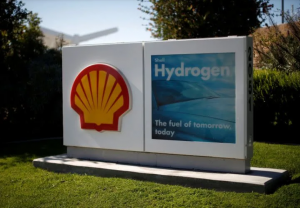 Hydrogen Costs Coming Into Focus “Without hydrogen by 2050 we cannot aim to be a net zero (carbon) economy,” Royal Dutch Shell CEO Ben van Beurden told the CERAWeek online conference. “It will scale up, and it will take a long time before it is a business that is large enough to start making a real difference on sort of planetary scale,” he said. A challenge is the cost of producing green hydrogen, which cannot compete with natural gas or with hydrogen produced from natural gas. So-called “grey hydrogen,” hydrogen produced from natural gas or coal in a process that emits high levels of carbon dioxide, is the most common form of the fuel produced today and costs around $1 per kilogram. Cleaner blue hydrogen, which captures and stores the carbon dioxide, costs $2 to $3 per kg to produce while green hydrogen – based on the use of clean energy and electrolysis to extract hydrogen from water – costs around $5 per kg. Transporting hydrogen also is expensive even if it is converted to liquid in the form of ammonia. https://www.yahoo.com/entertainment/energy-firms-bet-hydrogen-boom-142122768.html
Hydrogen Costs Coming Into Focus “Without hydrogen by 2050 we cannot aim to be a net zero (carbon) economy,” Royal Dutch Shell CEO Ben van Beurden told the CERAWeek online conference. “It will scale up, and it will take a long time before it is a business that is large enough to start making a real difference on sort of planetary scale,” he said. A challenge is the cost of producing green hydrogen, which cannot compete with natural gas or with hydrogen produced from natural gas. So-called “grey hydrogen,” hydrogen produced from natural gas or coal in a process that emits high levels of carbon dioxide, is the most common form of the fuel produced today and costs around $1 per kilogram. Cleaner blue hydrogen, which captures and stores the carbon dioxide, costs $2 to $3 per kg to produce while green hydrogen – based on the use of clean energy and electrolysis to extract hydrogen from water – costs around $5 per kg. Transporting hydrogen also is expensive even if it is converted to liquid in the form of ammonia. https://www.yahoo.com/entertainment/energy-firms-bet-hydrogen-boom-142122768.html
 The Bridge to Renewables – In 2021, Developers and Powerplant owners plan to bring on 39.7 gigawatts of electricity generating capacity and retire 9.1 gigawatts in generating capacity (graphs 1 and 2). Out of the 30.6 net gigawatts of generating capacity remaining, the top three contributors are 70% from wind and solar, 16% from natural gas, and 3% from a nuclear reactor. This number excludes individual efforts via rooftop solar panels. Rather, it includes large scale operations. https://gdcconsultingllc.com/consultants-blog/the-bridge-to-renewables/
The Bridge to Renewables – In 2021, Developers and Powerplant owners plan to bring on 39.7 gigawatts of electricity generating capacity and retire 9.1 gigawatts in generating capacity (graphs 1 and 2). Out of the 30.6 net gigawatts of generating capacity remaining, the top three contributors are 70% from wind and solar, 16% from natural gas, and 3% from a nuclear reactor. This number excludes individual efforts via rooftop solar panels. Rather, it includes large scale operations. https://gdcconsultingllc.com/consultants-blog/the-bridge-to-renewables/
 Gas stoves are bad for the environment—but what if the power goes out? | Popular Science They aren’t eco-friendly, but can be lifesaving in a catastrophe. “We feel that for policymakers and new construction, there’s no need [to install new gas stoves],” says Brady Seals, who manages the carbon-free building program at the Rocky Mountain Institute (RMI), a nonprofit focusing on the transition to clean energy. “For climate and for health, we should be building all-electric.” But in some emergency scenarios, like when Texas was buried under a pile of snow, people can get stuck without electricity for days and risk super cold temperatures and limited access to food and clean water. During those rare events, which may become less rare thanks to climate change, a gas stove can literally be a lifesaver. “All of our energy systems are subject to disruption, even gas,” Seals says. “We should think as individuals for our backup, but policymakers have to be planning for this now.” https://www.popsci.com/story/environment/gas-stove-climate-effects-debated/
Gas stoves are bad for the environment—but what if the power goes out? | Popular Science They aren’t eco-friendly, but can be lifesaving in a catastrophe. “We feel that for policymakers and new construction, there’s no need [to install new gas stoves],” says Brady Seals, who manages the carbon-free building program at the Rocky Mountain Institute (RMI), a nonprofit focusing on the transition to clean energy. “For climate and for health, we should be building all-electric.” But in some emergency scenarios, like when Texas was buried under a pile of snow, people can get stuck without electricity for days and risk super cold temperatures and limited access to food and clean water. During those rare events, which may become less rare thanks to climate change, a gas stove can literally be a lifesaver. “All of our energy systems are subject to disruption, even gas,” Seals says. “We should think as individuals for our backup, but policymakers have to be planning for this now.” https://www.popsci.com/story/environment/gas-stove-climate-effects-debated/
 Biden told union leaders ‘I’m all for natural gas’: report. Publicly, Biden has pushed an agenda that promises 100 percent clean energy by 2035. President Biden personally promised union leaders his support for natural gas, United Association General Mark McManus said. In a Feb. 17 meeting in the Oval Office, Biden met with nine labor leaders in the Oval Office to discuss his coronavirus relief package and infrastructure plans. McManus, was one of those leaders. “I brought up natural gas specifically to him, we spoke about pipelines … and he says, ‘I’m all for natural gas,'” McManus told E&E News of the meeting in a story published Thursday. Natural gas emits fewer CO2 emissions than other fossil fuels. https://www.foxnews.com/politics/biden-union-leaders-natural-gas
Biden told union leaders ‘I’m all for natural gas’: report. Publicly, Biden has pushed an agenda that promises 100 percent clean energy by 2035. President Biden personally promised union leaders his support for natural gas, United Association General Mark McManus said. In a Feb. 17 meeting in the Oval Office, Biden met with nine labor leaders in the Oval Office to discuss his coronavirus relief package and infrastructure plans. McManus, was one of those leaders. “I brought up natural gas specifically to him, we spoke about pipelines … and he says, ‘I’m all for natural gas,'” McManus told E&E News of the meeting in a story published Thursday. Natural gas emits fewer CO2 emissions than other fossil fuels. https://www.foxnews.com/politics/biden-union-leaders-natural-gas
 NYC Natural Gas Ban Costs Potentially ‘Astronomical’ A New York City ban on natural gas connections in new buildings by 2030 and announced policies to ban natural gas and other fossil fuels in large buildings by 2040 could cost New York City households upwards of $25,000, a Consumer Energy Alliance study shows. https://pgjonline.com/news/2021/march/nyc-natural-gas-ban-costs-potentially-astronomical
NYC Natural Gas Ban Costs Potentially ‘Astronomical’ A New York City ban on natural gas connections in new buildings by 2030 and announced policies to ban natural gas and other fossil fuels in large buildings by 2040 could cost New York City households upwards of $25,000, a Consumer Energy Alliance study shows. https://pgjonline.com/news/2021/march/nyc-natural-gas-ban-costs-potentially-astronomical

New York slow to curb natural gas in new construction Local governments in New York have so far stumbled on a measure environmentalists have increasingly argued will be crucial to meeting the state’s goals in battling climate change — bans on natural gas in new construction. For years, climate advocates have fought the construction of big, interstate pipelines to cut off the supply of “fracked” natural gas. But those efforts routinely face significant legal hurdles and a federal energy regulator that typically overrides local sentiment for the sake of reliability. https://www.politico.com/states/new-york/albany/story/2020/02/25/new-york-slow-to-curb-natural-gas-in-new-construction-1263585
 Seattle City Council passes measure to end most natural gas use in commercial buildings and some apartments. The Seattle City Council on Monday unanimously approved changes to energy codes that will further clamp down on natural gas use in new commercial and apartment buildings taller than three stories. The ordinance bans natural gas for space heating in new construction of these buildings, or for use in replacement heating systems in older buildings. https://www.seattletimes.com/seattle-news/seattle-city-council-passes-measure-to-end-most-natural-gas-use-in-commercial-buildings-and-some-apartments/
Seattle City Council passes measure to end most natural gas use in commercial buildings and some apartments. The Seattle City Council on Monday unanimously approved changes to energy codes that will further clamp down on natural gas use in new commercial and apartment buildings taller than three stories. The ordinance bans natural gas for space heating in new construction of these buildings, or for use in replacement heating systems in older buildings. https://www.seattletimes.com/seattle-news/seattle-city-council-passes-measure-to-end-most-natural-gas-use-in-commercial-buildings-and-some-apartments/
Peoples Gas i s spending billions to replace miles of aging pipe below Chicago by 2040. But will natural gas be obsolete before it’s complete? When Peoples Gas launched its massive, customer-funded System Modernization Program to replace 2,000 miles of aging iron pipes below Chicago streets in 2011, the utility said it would take 20 years and cost $2.6 billion to finish. Nearly 10 years later, the pipeline replacement program is less than a third complete, and Peoples Gas now says it will take until 2040 and cost $7.7 billion. https://www.chicagotribune.com/business/ct-biz-peoples-gas-pipeline-replacement-renewable-energy-20201222-i6er5w2abjeazg34ywajhfvg7q-story.html
s spending billions to replace miles of aging pipe below Chicago by 2040. But will natural gas be obsolete before it’s complete? When Peoples Gas launched its massive, customer-funded System Modernization Program to replace 2,000 miles of aging iron pipes below Chicago streets in 2011, the utility said it would take 20 years and cost $2.6 billion to finish. Nearly 10 years later, the pipeline replacement program is less than a third complete, and Peoples Gas now says it will take until 2040 and cost $7.7 billion. https://www.chicagotribune.com/business/ct-biz-peoples-gas-pipeline-replacement-renewable-energy-20201222-i6er5w2abjeazg34ywajhfvg7q-story.html
 Supply Chains Need a Factory Reset The global economy relies on a highly intricate system that brings raw materials to places at precisely the moment when they’re required. Like your social skills, that system is completely out of whack right now, reports the WSJ. You know about the pandemic-induced chip shortage—but manufacturers are also lacking other materials. https://www.morningbrew.com/daily/stories/2021/03/18/supply-chains-need-factory-reset?email=shenrich@pacbell.net
Supply Chains Need a Factory Reset The global economy relies on a highly intricate system that brings raw materials to places at precisely the moment when they’re required. Like your social skills, that system is completely out of whack right now, reports the WSJ. You know about the pandemic-induced chip shortage—but manufacturers are also lacking other materials. https://www.morningbrew.com/daily/stories/2021/03/18/supply-chains-need-factory-reset?email=shenrich@pacbell.net
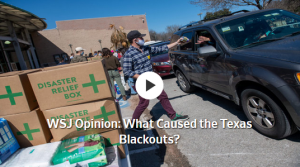 Texas’ Blackouts Blew In on the Wind Regardless of your thoughts on climate change, last month’s storm made painfully clear that climate catastrophists have an oversize influence on public policy. An obsessive focus on reaching the unattainable goal of zero carbon emissions led to decades of poor decisions that prioritized and subsidized unreliable energy sources (wind and solar) at the expense of reliable ones (natural gas, coal and nuclear). Texans now know that reliable energy is essential to our everyday lives. Wall Street Journal article
Texas’ Blackouts Blew In on the Wind Regardless of your thoughts on climate change, last month’s storm made painfully clear that climate catastrophists have an oversize influence on public policy. An obsessive focus on reaching the unattainable goal of zero carbon emissions led to decades of poor decisions that prioritized and subsidized unreliable energy sources (wind and solar) at the expense of reliable ones (natural gas, coal and nuclear). Texans now know that reliable energy is essential to our everyday lives. Wall Street Journal article
 What Happened in Texas (Podcast) Alex Epstein and Robert Bryce join us to examine the truth about what went wrong with the Texas power grid this week. Alex Epstein is the founder of Center for Industrial Progress, co-founder of Thoughtful.community, writer at EnergyTalkingPoints.com, and the author of “The Moral Case for Fossil Fuels.” Robert Bryce is host of The Power Hungry podcast and a visiting fellow at the Foundation for Research on Equal Opportunity https://podcasts.apple.com/us/podcast/what-happened-in-texas-with-alex-epstein-and-robert-bryce/id1498149200?i=1000509613227
What Happened in Texas (Podcast) Alex Epstein and Robert Bryce join us to examine the truth about what went wrong with the Texas power grid this week. Alex Epstein is the founder of Center for Industrial Progress, co-founder of Thoughtful.community, writer at EnergyTalkingPoints.com, and the author of “The Moral Case for Fossil Fuels.” Robert Bryce is host of The Power Hungry podcast and a visiting fellow at the Foundation for Research on Equal Opportunity https://podcasts.apple.com/us/podcast/what-happened-in-texas-with-alex-epstein-and-robert-bryce/id1498149200?i=1000509613227
 How Progressive Energy Policies Are Hurting Average Americans(Podcast) Robert Bryce, host of The Power Hungry podcast and a visiting fellow at the Foundation for Research on Equal Opportunity, joins us to discuss how progressive politics is shaping energy regulations across the country, and why it is ultimately an “energy” injustice to low and middle class Americans. We also cover California’s grid problems, solar subsidies, Biden’s energy mandates, and much more. https://podcasts.apple.com/us/podcast/hold-these-truths-with-dan-crenshaw/id1498149200?i=1000509018169
How Progressive Energy Policies Are Hurting Average Americans(Podcast) Robert Bryce, host of The Power Hungry podcast and a visiting fellow at the Foundation for Research on Equal Opportunity, joins us to discuss how progressive politics is shaping energy regulations across the country, and why it is ultimately an “energy” injustice to low and middle class Americans. We also cover California’s grid problems, solar subsidies, Biden’s energy mandates, and much more. https://podcasts.apple.com/us/podcast/hold-these-truths-with-dan-crenshaw/id1498149200?i=1000509018169
 This Blizzard Exposes The Perils Of Attempting To ‘Electrify Everything’ The massive blast of Siberia-like cold that is wreaking havoc across North America is proving that if we humans want to keep surviving frigid winters, we are going to have to keep burning natural gas — and lots of it — for decades to come. That cold reality contradicts the “electrify everything” scenario that’s being promoted by climate change activists, politicians, and academics. https://www.forbes.com/sites/robertbryce/2021/02/15/this-blizzard-exposes-the-perils-of-attempting-to-electrify-everything/?sh=259db7c07e15
This Blizzard Exposes The Perils Of Attempting To ‘Electrify Everything’ The massive blast of Siberia-like cold that is wreaking havoc across North America is proving that if we humans want to keep surviving frigid winters, we are going to have to keep burning natural gas — and lots of it — for decades to come. That cold reality contradicts the “electrify everything” scenario that’s being promoted by climate change activists, politicians, and academics. https://www.forbes.com/sites/robertbryce/2021/02/15/this-blizzard-exposes-the-perils-of-attempting-to-electrify-everything/?sh=259db7c07e15
 GHG Pollution Reduction Roadmap On January 14, 2021, Colorado released its Greenhouse Gas Pollution Reduction Roadmap. The Roadmap represents the most action-oriented, ambitious and substantive planning process that Colorado has ever undertaken on climate leadership, pollution reduction and a clean energy transition. It lays out an achievable pathway to meet the state’s science-based climate targets of 26% by 2025, 50% by 2030% and 90% by 2050 from 2005 levels that were part of House Bill 19-1261 Climate Action Plan to Reduce Pollution. An executive summary of the Roadmap (also included in the full report) is available here. https://energyoffice.colorado.gov/climate-energy/ghg-pollution-reduction-roadmap
GHG Pollution Reduction Roadmap On January 14, 2021, Colorado released its Greenhouse Gas Pollution Reduction Roadmap. The Roadmap represents the most action-oriented, ambitious and substantive planning process that Colorado has ever undertaken on climate leadership, pollution reduction and a clean energy transition. It lays out an achievable pathway to meet the state’s science-based climate targets of 26% by 2025, 50% by 2030% and 90% by 2050 from 2005 levels that were part of House Bill 19-1261 Climate Action Plan to Reduce Pollution. An executive summary of the Roadmap (also included in the full report) is available here. https://energyoffice.colorado.gov/climate-energy/ghg-pollution-reduction-roadmap
 The Economist looks at coal, the main source of greenhouse gases. In America and Europe consumption has fallen by 34% since 2009. The International Energy Agency reckons that global coal use will never again surpass its pre-covid peak. Yet coal still accounts for 27% of the raw energy used to power everything from cars to electric grids. More important, unlike natural gas and oil, it is concentrated carbon, and thus it accounts for a staggering 39% of annual emissions of carbon dioxide from fossil fuels. If global emissions are to fall far enough, fast enough, the task now is to replicate the West’s success and repeat it in Asia. Technology will help. Solar farms and onshore wind are now the cheapest source of new electricity for at least two-thirds of the world’s population. But the politics of coal are treacherous, even for autocratic governments. If Asia is to complete the revolution started in the West and consign coal to museums and the history books, much work lies ahead. https://www.economist.com/leaders/2020/12/03/time-to-make-coal-history
The Economist looks at coal, the main source of greenhouse gases. In America and Europe consumption has fallen by 34% since 2009. The International Energy Agency reckons that global coal use will never again surpass its pre-covid peak. Yet coal still accounts for 27% of the raw energy used to power everything from cars to electric grids. More important, unlike natural gas and oil, it is concentrated carbon, and thus it accounts for a staggering 39% of annual emissions of carbon dioxide from fossil fuels. If global emissions are to fall far enough, fast enough, the task now is to replicate the West’s success and repeat it in Asia. Technology will help. Solar farms and onshore wind are now the cheapest source of new electricity for at least two-thirds of the world’s population. But the politics of coal are treacherous, even for autocratic governments. If Asia is to complete the revolution started in the West and consign coal to museums and the history books, much work lies ahead. https://www.economist.com/leaders/2020/12/03/time-to-make-coal-history
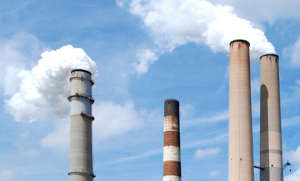 MJB&A Releases New Report on the Role of Natural Gas Networks in a Low-Carbon Future On December 17, 2020, M.J. Bradley & Associates released a new paper titled “The Role of Natural Gas Networks in a Low-Carbon Future.” This paper outlines key strategies for natural gas utilities to decarbonize their infrastructure and operations, as well as to support the transition to a decarbonized economy in their service areas – all while enabling them to continue to provide a safe, reliable, affordable, and sustainable energy supply. https://www.mjbradley.com/news-events/mjba-releases-new-report-role-natural-gas-networks-low-carbon-future
MJB&A Releases New Report on the Role of Natural Gas Networks in a Low-Carbon Future On December 17, 2020, M.J. Bradley & Associates released a new paper titled “The Role of Natural Gas Networks in a Low-Carbon Future.” This paper outlines key strategies for natural gas utilities to decarbonize their infrastructure and operations, as well as to support the transition to a decarbonized economy in their service areas – all while enabling them to continue to provide a safe, reliable, affordable, and sustainable energy supply. https://www.mjbradley.com/news-events/mjba-releases-new-report-role-natural-gas-networks-low-carbon-future
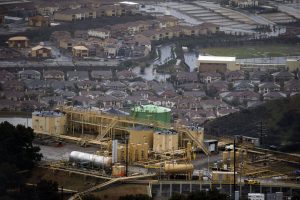 California’s Misguided War on Natural Gas. Unintended consequences can be a cruel mistress. Regarding Allysia Finley’s op-ed “Now We’re Cooking With Gas. But Tomorrow?” (Dec. 17): Forbidding natural-gas connections in new buildings ensures that more, not less, natural gas will be consumed to meet the new demand for electricity. Similarly, government mandates for electric vehicles, space heating and cooking will increase the total amount of natural gas burned. https://www.wsj.com/articles/californias-misguided-war-on-natural-gas-11608754078?st=g25nvq8nki7zuxw&reflink=article_gmail_share
California’s Misguided War on Natural Gas. Unintended consequences can be a cruel mistress. Regarding Allysia Finley’s op-ed “Now We’re Cooking With Gas. But Tomorrow?” (Dec. 17): Forbidding natural-gas connections in new buildings ensures that more, not less, natural gas will be consumed to meet the new demand for electricity. Similarly, government mandates for electric vehicles, space heating and cooking will increase the total amount of natural gas burned. https://www.wsj.com/articles/californias-misguided-war-on-natural-gas-11608754078?st=g25nvq8nki7zuxw&reflink=article_gmail_share
 A new poll just released this week shows that a majority of Texas voters understand the importance of the oil and natural gas industry and its role in keeping energy affordable, powering modern life, national security, and our economic recovery from the pandemic. More than three-fourths of Texas voters believe oil and natural gas are essential to a modern lifestyle and will play a significant role in meeting our energy needs 20 years from now. Almost every Texan polled agreed that it is important to produce enough energy so the U.S. is not as reliant on other countries for oil, with over two-thirds saying they are more likely to vote for a candidate who supports access to oil and gas produced in the U.S. https://www.txoga.org/new-poll-majority-of-texas-voters-support-u-s-energy-leadership/
A new poll just released this week shows that a majority of Texas voters understand the importance of the oil and natural gas industry and its role in keeping energy affordable, powering modern life, national security, and our economic recovery from the pandemic. More than three-fourths of Texas voters believe oil and natural gas are essential to a modern lifestyle and will play a significant role in meeting our energy needs 20 years from now. Almost every Texan polled agreed that it is important to produce enough energy so the U.S. is not as reliant on other countries for oil, with over two-thirds saying they are more likely to vote for a candidate who supports access to oil and gas produced in the U.S. https://www.txoga.org/new-poll-majority-of-texas-voters-support-u-s-energy-leadership/
 International Gas Union Welcomes Findings of IEA’s World Energy Outlook The World Energy Outlook 2020 (WEO) states that, “There is a robust long-term case for gases in the energy system. In the SDS, there are services that gases provide that it would be difficult to provide cost effectively using other sources: these include high temperature heat for industry, winter heat for buildings and seasonal flexibility for power systems.” Furthermore, “gas infrastructure is a valuable asset that can be repurposed over time to deliver large volumes of biomethane or, with modifications, low-carbon hydrogen.” http://gas-utility.com/news/2020/10-october/international-gas-union-welcomes-findings-of-ieas-world-energy-outlook/
International Gas Union Welcomes Findings of IEA’s World Energy Outlook The World Energy Outlook 2020 (WEO) states that, “There is a robust long-term case for gases in the energy system. In the SDS, there are services that gases provide that it would be difficult to provide cost effectively using other sources: these include high temperature heat for industry, winter heat for buildings and seasonal flexibility for power systems.” Furthermore, “gas infrastructure is a valuable asset that can be repurposed over time to deliver large volumes of biomethane or, with modifications, low-carbon hydrogen.” http://gas-utility.com/news/2020/10-october/international-gas-union-welcomes-findings-of-ieas-world-energy-outlook/
 Daniel Turner: China would control a ‘Green Energy’ World With the various pushes for #GreenEnergy, what’s often less discussed is geopolitics and who would control the global energy market. According to #DanielTurner, executive director of Power the Future, the country in control of a “going green” push would be #China, given its control over rare earth minerals and supply chains for the alternative energy markets. We’ve invited Daniel Turner to speak with us to learn more.
Daniel Turner: China would control a ‘Green Energy’ World With the various pushes for #GreenEnergy, what’s often less discussed is geopolitics and who would control the global energy market. According to #DanielTurner, executive director of Power the Future, the country in control of a “going green” push would be #China, given its control over rare earth minerals and supply chains for the alternative energy markets. We’ve invited Daniel Turner to speak with us to learn more.
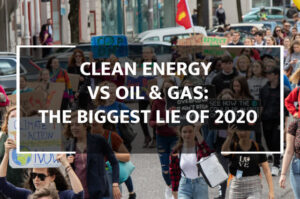 The Clean Transition is a bumpy, uncertain road. Climate change is a real threat to the planet. If our hunger for growth doesn’t subside (it won’t), we have to significantly curtail carbon emissions to avoid disastrous outcomes for the planet. But doing this comes with challenges which the market is not recognizing today. With renewables at all time highs, and oil & gas stocks at all time lows, the market is pricing that the transition from dirty to clean is a done deal. We’re not there yet. We’re not anywhere close. https://seekingalpha.com/article/4382875-clean-energy-vs-oil-gas-biggest-lie-of-2020
The Clean Transition is a bumpy, uncertain road. Climate change is a real threat to the planet. If our hunger for growth doesn’t subside (it won’t), we have to significantly curtail carbon emissions to avoid disastrous outcomes for the planet. But doing this comes with challenges which the market is not recognizing today. With renewables at all time highs, and oil & gas stocks at all time lows, the market is pricing that the transition from dirty to clean is a done deal. We’re not there yet. We’re not anywhere close. https://seekingalpha.com/article/4382875-clean-energy-vs-oil-gas-biggest-lie-of-2020
 Editorial: Yes, Joe Biden Really Does Want to End the Oil and Gas Industry in America Among other items, Biden’s energy plan calls for the elimination of carbon from power generation by 2035. The genesis of the Biden Plan, which can be found on the Democratic Party Platform website, is the Biden-Sanders Manifesto of July 20, 2020, which was submitted to the Democrat National Committee by co-Chairs John Kerry and Alexandria Ocasio-Cortez. http://pgjonline.com/news/2020/10-october/yes-joe-biden-really-does-want-to-end-the-oil-and-gas-industry-in-america
Editorial: Yes, Joe Biden Really Does Want to End the Oil and Gas Industry in America Among other items, Biden’s energy plan calls for the elimination of carbon from power generation by 2035. The genesis of the Biden Plan, which can be found on the Democratic Party Platform website, is the Biden-Sanders Manifesto of July 20, 2020, which was submitted to the Democrat National Committee by co-Chairs John Kerry and Alexandria Ocasio-Cortez. http://pgjonline.com/news/2020/10-october/yes-joe-biden-really-does-want-to-end-the-oil-and-gas-industry-in-america
ICC approves independent report on condition of natural gas delivery network in Chicago Peoples Gas is replacing 2,000 miles of aging iron pipes, some as old as 150 years, with modern piping that does not rust or corrode. The upgrades improve safety and reliability and reduce methane emissions. SMP will be 30% complete by the end of 2020, and is scheduled to be fully completed by 2040. https://www.peoplesgasdelivery.com/partners/media/view-article?id=02988
 No more natural gas in new San Francisco buildings starting in 2021 The San Francisco Board of Supervisors voted unanimously Tuesday 11/10/20 to ban natural gas in new buildings, meaning that stoves, furnaces and water heaters will no longer burn gas for heat. https://www.sfchronicle.com/bayarea/article/No-more-natural-gas-in-new-San-Francisco-15717658.php
No more natural gas in new San Francisco buildings starting in 2021 The San Francisco Board of Supervisors voted unanimously Tuesday 11/10/20 to ban natural gas in new buildings, meaning that stoves, furnaces and water heaters will no longer burn gas for heat. https://www.sfchronicle.com/bayarea/article/No-more-natural-gas-in-new-San-Francisco-15717658.php
 California’s Shift from Natural Gas to Solar Is Playing a Role in Rolling Blackouts California’s grid operator warns that the state has become overly reliant on power imports: “The rest of the West is hot too.” https://www.greentechmedia.com/articles/read/how-californias-shift-from-natural-gas-to-solar-is-playing-a-role-in-rolling-blackouts
California’s Shift from Natural Gas to Solar Is Playing a Role in Rolling Blackouts California’s grid operator warns that the state has become overly reliant on power imports: “The rest of the West is hot too.” https://www.greentechmedia.com/articles/read/how-californias-shift-from-natural-gas-to-solar-is-playing-a-role-in-rolling-blackouts
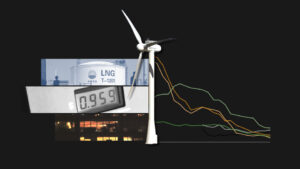 Why California Keeps Having Blackouts Much like two decades ago, when it faced rolling blackouts, the Golden State has to buy sizable volumes of electricity on the spot market—this time as solar power fades out. https://www.wsj.com/articles/why-california-keeps-having-blackouts-11598198401?mod=searchresults&page=1&pos=3
Why California Keeps Having Blackouts Much like two decades ago, when it faced rolling blackouts, the Golden State has to buy sizable volumes of electricity on the spot market—this time as solar power fades out. https://www.wsj.com/articles/why-california-keeps-having-blackouts-11598198401?mod=searchresults&page=1&pos=3
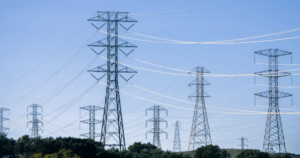 Working families should not subsidize renewable energy Behind the current wildfires are record temperatures driven by climate change. The highest temperature ever recorded anywhere in the world was 130 degrees last month in Death Valley. Recent rolling blackouts remind us of California’s wrenching energy crisis 20 years ago. Are we better prepared today to avoid a repeat of such a debacle? Unfortunately, the answer is probably not. https://calmatters.org/commentary/my-turn/2020/09/working-families-should-not-subsidize-renewable-energy/
Working families should not subsidize renewable energy Behind the current wildfires are record temperatures driven by climate change. The highest temperature ever recorded anywhere in the world was 130 degrees last month in Death Valley. Recent rolling blackouts remind us of California’s wrenching energy crisis 20 years ago. Are we better prepared today to avoid a repeat of such a debacle? Unfortunately, the answer is probably not. https://calmatters.org/commentary/my-turn/2020/09/working-families-should-not-subsidize-renewable-energy/
 Under blackout threat, California may keep gas power plants state rushed to close California officials are determining whether to give an extension to four gas plants that were expected to shut down by 2020. https://apple.news/AVcc9bwsoT4m1VcbVwqi1ow
Under blackout threat, California may keep gas power plants state rushed to close California officials are determining whether to give an extension to four gas plants that were expected to shut down by 2020. https://apple.news/AVcc9bwsoT4m1VcbVwqi1ow
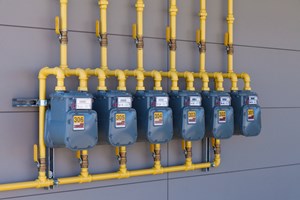 Study Finds Gas Utility Residential Satisfaction at All-Time High “Natural gas utility companies have put forth enormous effort to assist their customers, especially during this challenging time, by way of proactive communications on topics such as financial assistance to help educate customers,” said Carl Lepper, director of the utility practice at J.D. Power. “The biggest change in satisfaction is seen in brand image, which means the assistance efforts have not gone unnoticed by customers, despite increased use, therefore costs.” http://gas-utility.com/news/2020/09-september/study-finds-gas-utility-residential-satisfaction-at-all-time-high/
Study Finds Gas Utility Residential Satisfaction at All-Time High “Natural gas utility companies have put forth enormous effort to assist their customers, especially during this challenging time, by way of proactive communications on topics such as financial assistance to help educate customers,” said Carl Lepper, director of the utility practice at J.D. Power. “The biggest change in satisfaction is seen in brand image, which means the assistance efforts have not gone unnoticed by customers, despite increased use, therefore costs.” http://gas-utility.com/news/2020/09-september/study-finds-gas-utility-residential-satisfaction-at-all-time-high/

The US Natural Gas Industry: Surging Throughout, Falling Methane Emissions The U.S. natural gas business has been booming over the past decade. Since the shale revolution took flight in 2008, production has risen over 50% to 88 Bcf/d. With gas emitting 50% less CO2 than coal, and 30% less than oil, more gas has cut CO2 emissions in the U.S. power system to their lowest levels since 1985. https://www.realclearenergy.org/articles/2019/02/14/the_us_natural_gas_industry_surging_throughput_falling_methane_emissions.html
 The U.S. Is Overflowing With Natural Gas. Not Everyone Can Get It U.S. gas production is at a record high, but the infrastructure needed to move the fuel around the country hasn’t kept up. https://www.wsj.com/articles/the-u-s-is-overflowing-with-natural-gas-not-everyone-can-get-it-11562518355?width=10&height=5
The U.S. Is Overflowing With Natural Gas. Not Everyone Can Get It U.S. gas production is at a record high, but the infrastructure needed to move the fuel around the country hasn’t kept up. https://www.wsj.com/articles/the-u-s-is-overflowing-with-natural-gas-not-everyone-can-get-it-11562518355?width=10&height=5
 Gas sector keeps watch as municipal gas ban battles play out in 2020 Houston — The year 2020 could reveal whether a smattering municipal bans on new natural gas hookups for buildings becomes a more widespread movement tied to de-carbonization efforts around the country. Partly at stake for the natural gas sector is maintaining its share in the residential-commercial market. The res-comm sector makes up about 26% of US gas demand, according to S&P Global Platts Analytics.https://www.spglobal.com/platts/en/market-insights/latest-news/natural-gas/122619-commodities-2020-gas-sector-keeps-watch-as-municipal-gas-ban-battles-play-out-in-2020
Gas sector keeps watch as municipal gas ban battles play out in 2020 Houston — The year 2020 could reveal whether a smattering municipal bans on new natural gas hookups for buildings becomes a more widespread movement tied to de-carbonization efforts around the country. Partly at stake for the natural gas sector is maintaining its share in the residential-commercial market. The res-comm sector makes up about 26% of US gas demand, according to S&P Global Platts Analytics.https://www.spglobal.com/platts/en/market-insights/latest-news/natural-gas/122619-commodities-2020-gas-sector-keeps-watch-as-municipal-gas-ban-battles-play-out-in-2020
 Consumer Energy Alliance releases report on how Illinoisans greatly benefit from natural gas. You may have read in the news over the last few months that unfortunately, some states and cities have been considering harmful policies for communities, households and those struggling to make ends meet by eliminating the use of affordable natural gas. TheConsumer Energy Alliance (CEA) released a report entitled “Powering the Way for a More Vibrant Illinois” that highlights the incredible savings consumers have enjoyed with enhanced supplies – which depend on safe, secure and reliable pipelines in Illinois – and the importance of those economic benefits during this time of economic uncertainty. According to the report, nationwide availability and increased production of natural gas has enabled Illinois consumers to save more than $24 billion between 2007 and 2017 over other sources of energy. Residential users alone saved over $11 billion, and commercial and industrial users saved more than $13.8 billion combined. This translates to $876 for every citizen of the state over that time period. https://consumerenergyalliance.org/cms/wp-content/uploads/2020/01/022820_CEA-IL-Report_FINAL.pdf
Consumer Energy Alliance releases report on how Illinoisans greatly benefit from natural gas. You may have read in the news over the last few months that unfortunately, some states and cities have been considering harmful policies for communities, households and those struggling to make ends meet by eliminating the use of affordable natural gas. TheConsumer Energy Alliance (CEA) released a report entitled “Powering the Way for a More Vibrant Illinois” that highlights the incredible savings consumers have enjoyed with enhanced supplies – which depend on safe, secure and reliable pipelines in Illinois – and the importance of those economic benefits during this time of economic uncertainty. According to the report, nationwide availability and increased production of natural gas has enabled Illinois consumers to save more than $24 billion between 2007 and 2017 over other sources of energy. Residential users alone saved over $11 billion, and commercial and industrial users saved more than $13.8 billion combined. This translates to $876 for every citizen of the state over that time period. https://consumerenergyalliance.org/cms/wp-content/uploads/2020/01/022820_CEA-IL-Report_FINAL.pdf
 New York’s Natural Gas Pipeline Ban: Unconstitutional, Bad For The Environment, Economy & Consumers “Most of our political evils may be traced to our commercial ones.” – James Madison to Thomas Jefferson, 1786. In 1824, the U.S. Supreme Court voided a New York law that granted an exclusive right to navigate by steamboat within state waters. New York is at it again, 195 years later, with Gov. Andrew Cuomo abusing the federal Clean Water Act to prevent the construction of natural gas pipelines across the state, not only denying New Yorkers a reliable, less expensive, and cleaner source of energy, but also denying those same benefits to people living to the east in New England.https://www.forbes.com/sites/chuckdevore/2019/05/06/new-yorks-natural-gas-pipeline-ban-unconstitutional-bad-for-the-environment-economy-consumers/#2596d260604f
New York’s Natural Gas Pipeline Ban: Unconstitutional, Bad For The Environment, Economy & Consumers “Most of our political evils may be traced to our commercial ones.” – James Madison to Thomas Jefferson, 1786. In 1824, the U.S. Supreme Court voided a New York law that granted an exclusive right to navigate by steamboat within state waters. New York is at it again, 195 years later, with Gov. Andrew Cuomo abusing the federal Clean Water Act to prevent the construction of natural gas pipelines across the state, not only denying New Yorkers a reliable, less expensive, and cleaner source of energy, but also denying those same benefits to people living to the east in New England.https://www.forbes.com/sites/chuckdevore/2019/05/06/new-yorks-natural-gas-pipeline-ban-unconstitutional-bad-for-the-environment-economy-consumers/#2596d260604f
California Restaurant Industry Group Sues Berkeley Over Natural Gas Ban A gas-lit flame burns on a stove. A California restaurant organization is suing Berkeley over the city’s ban on natural gas, which is set to take effect in January, 2020. https://www.npr.org/2019/11/21/781874235/california-restaurant-industry-group-sues-berkeley-over-natural-gas-ban
Arizona House Passes Industry-Backed Pre-Emption Bill to Keep Natural Gas Flowing If it becomes law, HB 2686 would prevent Arizona cities or towns from imposing greater fees or restricting permits for buildings that use certain utilities, like gas. None actually do that now, but the bill would stymie future efforts by local municipalities to mandate cleaner energy and air. https://www.phoenixnewtimes.com/news/natural-gas-protection-bill-southwest-gas-arizona-legislature-11442203
 These Cities Want to Ban Natural Gas. But Would It Be Legal? Cambridge, Massachusetts, got a surprise warning as it considered a natural gas ban to reduce its climate impact. With concerns about natural gas’s impact on climate change rising, several Massachusetts cities and towns have started exploring outright bans on new natural gas hookups in commercial and residential buildings. Berkeley, California, passed the first such ban in the country this past summer, and other West Coast cities have since followed with similar restrictions.
These Cities Want to Ban Natural Gas. But Would It Be Legal? Cambridge, Massachusetts, got a surprise warning as it considered a natural gas ban to reduce its climate impact. With concerns about natural gas’s impact on climate change rising, several Massachusetts cities and towns have started exploring outright bans on new natural gas hookups in commercial and residential buildings. Berkeley, California, passed the first such ban in the country this past summer, and other West Coast cities have since followed with similar restrictions.
 Methane Emissions from Venting and Flaring Are Lower than Previously Thought The U.S. Environmental Protection Agency (EPA) publishes data on methane emission levels every year, including from venting and flaring. Methane emissions from oil and natural gas production activities have declined since 1990, and new EPA data show emissions from venting and flaring specifically are lower than what previous EPA assessments concluded. https://www.texansfornaturalgas.com/methane_emissions_lower_than_previously_thought?gclid=CjwKCAiAhJTyBRAvEiwAln2qBwW3DsFsXI5Z7Zbo7m8PIggJAT2NJJ0EmtuogfAqLjjgLpcDQpzkpBoC-HEQAvD_BwE
Methane Emissions from Venting and Flaring Are Lower than Previously Thought The U.S. Environmental Protection Agency (EPA) publishes data on methane emission levels every year, including from venting and flaring. Methane emissions from oil and natural gas production activities have declined since 1990, and new EPA data show emissions from venting and flaring specifically are lower than what previous EPA assessments concluded. https://www.texansfornaturalgas.com/methane_emissions_lower_than_previously_thought?gclid=CjwKCAiAhJTyBRAvEiwAln2qBwW3DsFsXI5Z7Zbo7m8PIggJAT2NJJ0EmtuogfAqLjjgLpcDQpzkpBoC-HEQAvD_BwE
Not only have there been no large increases in U.S. methane emissions over the last decade, but previous studies have significantly overestimated these emissions from U.S. oil and natural gas production, according to a new peer-reviewed study from the National Oceanic and Atmospheric Administration. As CIRES research scientist and study lead author Xin Lan told E&E News: https://eidclimate.org/noaa-previous-methane-studies-overestimated-u-s-oil-and-natural-gas-emissions/
 TWO NEW AMERICAN GAS FOUNDATION STUDIES PROVIDE COST-EFFECTIVE PATHWAYS FOR ACHIEVING SIGNIFICANT U.S. EMISSION REDUCTIONS The American Gas Foundation (AGF) focused on reducing greenhouse gas (GHG) emissions through the use of emerging natural gas direct use technologies and the development of renewable natural gas. “These two studies demonstrate how we will continue to use our vast, reliable and safe natural gas infrastructure to deliver affordable energy and drive down emissions,” said Karen Harbert, President and CEO of the American Gas Association. “ NATURAL GAS DIRECT USE TECHNOLOGIES The first study, conducted by Enovation Partners, demonstrates how widespread adoption of emerging natural gas direct use technologies could contribute significantly to achieving deep reductions in GHG emissions in the U.S. residential sector at much lower costs than other options under consideration. It estimates that natural gas residential emissions could be reduced by approximately 40 percent at a very competitive cost of $66 per metric ton of CO2 emissions. https://www.aga.org/news/news-releases/two-new-american-gas-foundation-studies-provide-cost-effective-pathways-for-achieving-significant-u.s.-emission-reductions/
TWO NEW AMERICAN GAS FOUNDATION STUDIES PROVIDE COST-EFFECTIVE PATHWAYS FOR ACHIEVING SIGNIFICANT U.S. EMISSION REDUCTIONS The American Gas Foundation (AGF) focused on reducing greenhouse gas (GHG) emissions through the use of emerging natural gas direct use technologies and the development of renewable natural gas. “These two studies demonstrate how we will continue to use our vast, reliable and safe natural gas infrastructure to deliver affordable energy and drive down emissions,” said Karen Harbert, President and CEO of the American Gas Association. “ NATURAL GAS DIRECT USE TECHNOLOGIES The first study, conducted by Enovation Partners, demonstrates how widespread adoption of emerging natural gas direct use technologies could contribute significantly to achieving deep reductions in GHG emissions in the U.S. residential sector at much lower costs than other options under consideration. It estimates that natural gas residential emissions could be reduced by approximately 40 percent at a very competitive cost of $66 per metric ton of CO2 emissions. https://www.aga.org/news/news-releases/two-new-american-gas-foundation-studies-provide-cost-effective-pathways-for-achieving-significant-u.s.-emission-reductions/
 California launches rulemaking to manage transition away from natural gas. The California Public Utilities Commission on Thursday launched a new rulemaking to regulate the state’s transition away from natural gas, addressing issues related to stranded assets and unfair cost shifts among ratepayers. https://www.utilitydive.com/news/cpuc-launches-rulemaking-transition-natural-gas/570653/
California launches rulemaking to manage transition away from natural gas. The California Public Utilities Commission on Thursday launched a new rulemaking to regulate the state’s transition away from natural gas, addressing issues related to stranded assets and unfair cost shifts among ratepayers. https://www.utilitydive.com/news/cpuc-launches-rulemaking-transition-natural-gas/570653/
 Shutdown of US coal power facilities saved over 26,000 lives, study finds. Shift to gas saved more than 300m tons of planet-heating carbon dioxide as nitrogen dioxide and sulfur dioxide levels dropped. The human toll from coal-fired pollution in America has been laid bare by a study that has found more than 26,000 lives were saved in the US in just a decade due to the shift from coal to gas for electricity generation. https://www.theguardian.com/environment/2020/jan/06/coal-power-pollution-gas-saved-lives-study
Shutdown of US coal power facilities saved over 26,000 lives, study finds. Shift to gas saved more than 300m tons of planet-heating carbon dioxide as nitrogen dioxide and sulfur dioxide levels dropped. The human toll from coal-fired pollution in America has been laid bare by a study that has found more than 26,000 lives were saved in the US in just a decade due to the shift from coal to gas for electricity generation. https://www.theguardian.com/environment/2020/jan/06/coal-power-pollution-gas-saved-lives-study
Electrification
 As director of sustainable design for National Community Renaissance, Tim Kohut helped plan a recently opened senior community in Rancho Cucamonga that produces as much electricity as it uses, thanks to solar panels spread across rooftops and carports. The home builder went a step further with a development under construction in Ontario, designing homes with electric heating and cooking. Natural gas will be used only for clothes dryers. With electric appliances getting cheaper, Kohut is convinced that ditching gas entirely is the best way to keep housing prices and utility costs low — not to mention reduce the carbon emissions fueling the climate crisis. https://www.latimes.com/business/story/2020-12-07/should-california-ban-gas-in-new-homes-a-climate-battle-heats-up
As director of sustainable design for National Community Renaissance, Tim Kohut helped plan a recently opened senior community in Rancho Cucamonga that produces as much electricity as it uses, thanks to solar panels spread across rooftops and carports. The home builder went a step further with a development under construction in Ontario, designing homes with electric heating and cooking. Natural gas will be used only for clothes dryers. With electric appliances getting cheaper, Kohut is convinced that ditching gas entirely is the best way to keep housing prices and utility costs low — not to mention reduce the carbon emissions fueling the climate crisis. https://www.latimes.com/business/story/2020-12-07/should-california-ban-gas-in-new-homes-a-climate-battle-heats-up
 Electrification is a word that is gaining attention from the corporate and regulatory boardrooms to the oilfields where hydraulic fracturing and other innovations have vaulted the United States into the global lead for both oil and natural gas production. https://www.nxtbook.com/nxtbooks/gulfpub/pgj_201912/index.php#/16
Electrification is a word that is gaining attention from the corporate and regulatory boardrooms to the oilfields where hydraulic fracturing and other innovations have vaulted the United States into the global lead for both oil and natural gas production. https://www.nxtbook.com/nxtbooks/gulfpub/pgj_201912/index.php#/16
 Balanced Energy Solutions for Tomorrow is a coalition of concerned residents, small business owners, utilities and leaders from industries across the Puget Sound region who believe the ordinance proposed by the Seattle City Council prohibiting natural gas systems in new buildings has serious implications. https://plannotban.com/
Balanced Energy Solutions for Tomorrow is a coalition of concerned residents, small business owners, utilities and leaders from industries across the Puget Sound region who believe the ordinance proposed by the Seattle City Council prohibiting natural gas systems in new buildings has serious implications. https://plannotban.com/
Three studies related to the costs of electrification of our energy grid and the high cost of switching away from natural gas:
Renewable Natural Gas
 Renewable natural gas: The climate change solution with limited awareness of its potential: https://www.utilitydive.com/news/renewable-natural-gas-the-climate-change-solution-with-limited-awareness-o/561786
Renewable natural gas: The climate change solution with limited awareness of its potential: https://www.utilitydive.com/news/renewable-natural-gas-the-climate-change-solution-with-limited-awareness-o/561786





